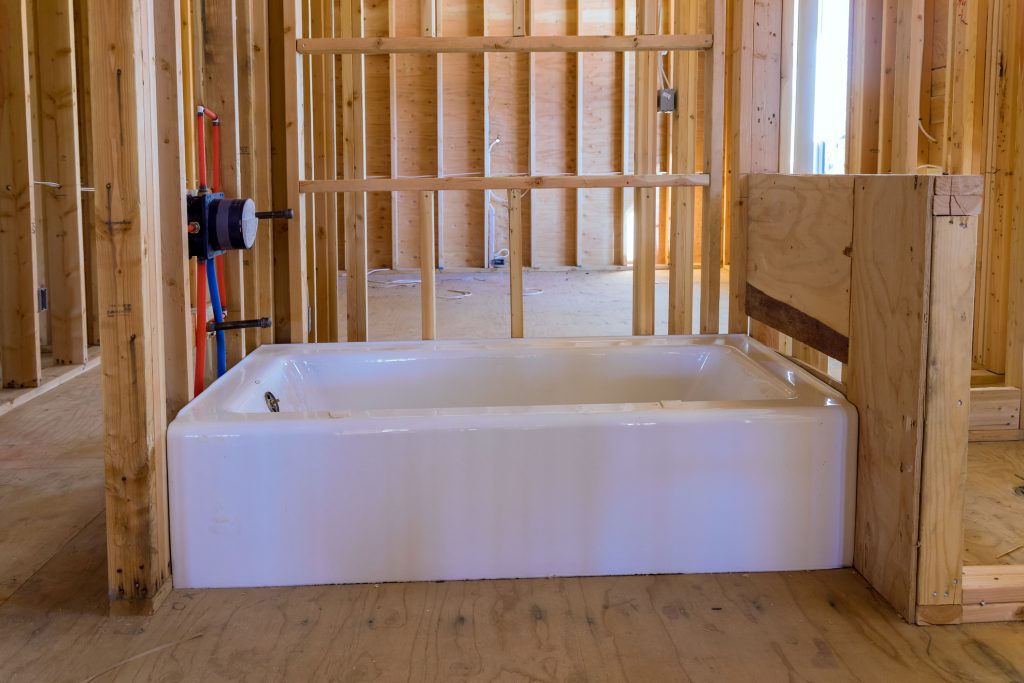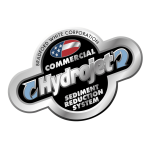If you’ve ever had a professional plumber come in to look at your plumbing system, they may have used terms you’ve never heard before.
Here at Plumb-Tech, we like to keep you in the know so you can be confident you’re getting the best plumbing services for your home. Read below to learn more about rough-in plumbing and whether you need to hire a professional for the task.
What is rough-in plumbing?
Rough-in plumbing is the initial infrastructure of the plumbing in your house. Think of it like the foundation for your pipework that will allow everything to use your plumbing once the walls and floors are installed.
This stage of plumbing begins once the framing of a house is completed during the construction of a new house or commercial building and it must be completed before the finished plumbing can be started.
For example, if the blueprints of a home report that a room has rough-in plumbing this means that all necessary vent lines, water lines, sewage lines, and drain lines have been installed and are ready for finished plumbing.
Rough-in vs finish plumbing phases
New construction plumbing can be broken down into two phases: rough-in and finish plumbing.
The rough-in plumbing phase can begin as soon as the framework of a building is completed by the construction team, but finished plumbing can only start after the first phase is complete.
Here is a quick outline of what each phase involves, and some important factors for each:
Rough-in plumbing
Many home and property owners often ask us, “What is a rough-in?” We’ve broken down this initial plumbing phase into six stages:
- Excavation – This is the process of digging up an area of ground for the installation of underground pipes connecting the primary structure to utility connections.
- Setting your tub and toilet drains – Now the plumbing team is ready to start setting the drains for your bathroom. They will measure, level, and drill holes for the toilet and tub drains.
- Drilling drains and vents – Holes are drilled to route drain lines and vent stacks through the wall cavities. Gravity will have to be factored in when positioning drain lines to avoid long horizontal drain runs. This will cause waste and water to drain improperly.
- Connecting water lines – All the drain lines and water supply lines are connected to the main water supply valves, as well as sewage or septic systems.
- Vent plumbing – Vent holes are drilled for any additional plumbing equipment, including boilers and water heaters. Plumbing professionals will check the blueprints to determine where the plumbing equipment will be installed. Then, they will drill the holes for external venting.
- Cap open lines and test for leaks – Plumbers must be sure to always cap off water lines in preparation for the finish plumbing phase. Then all water lines are tested to ensure proper installation and function.
Crucial factors
- Gravity plays a major role in the process of draining water and should always be taken into consideration during the rough-in stage and when installing any type of drain pipe.
- If your drain pipes are not angled downwards water and any waste won’t drain properly.
- However, if your drain pipes are set at too steep an angle, water, and waste may drain too quickly.
- Generally, the slope for drain pipes is ¼ inch per foot of pipe.
- Wastewater systems should always be vented to make sure potentially harmful substances are properly disposed of.
The rough-in phase of new construction plumbing can be a very daunting, complex, and even dangerous task that should only be done by trained professionals.
This is because rough-ins require extensive plumbing and building code knowledge, expensive equipment, heavy-duty machinery, and a lot of time. We highly recommend calling a professional plumber if you have any plans on taking on a new home build, or are adding a kitchen or bathroom to your home.
Finish plumbing
Finish plumbing is a shorter, less complex process. As the name suggests, it involves more of the “finishing touches” for your plumbing system, connecting the fixtures in your home to the main water lines. Here are the steps it involves:
- Removing caps on water supply lines and drains
- Installing plumbing fixtures and connections
- Caulking and sealing fixtures
- Installing under-sink drain assemblies
- Testing for leaks
Crucial factors
Finish plumbing is the installation and testing of the plumbing and fixtures we see and use every day in our homes. This is the final step before the plumbing is completed, and a certain level of finesse should be applied during this phase:
- All installations should look as good as they function during the finishing phase.
- Caulking should be applied in clean straight lines, using the proper caulking for the material you’re applying it to.
- Sealants should be applied evenly. Any clumps or noticeable build-ups should be smoothed and cleaned before it dries.
This phase can be completed on your own, but we strongly recommend calling a plumber as finished plumbing can be a tricky and complicated job. Plumbers have the necessary experience and skills required to make sure the final result is something to be proud of!
Hiring a plumber? Here are some things to note beforehand
Before any rough-ins are started, ensure your plumber has all the necessary information and layouts for the plumbing and location of your fixtures. It’s always a great idea to have your plumber walk the newly framed house with the builder present.
This will allow your plumber to get a better idea of where fixtures and pipes will be installed. It’s also a good time for your plumber to ask any questions to the builder.
Rough-in plumbing and other trades
Rough-ins aren’t just for plumbers!
Other tradespeople such as electricians and carpenters have rough-in and finish phases as well. This allows other trades workers like electricians and plumbers to complete their foundational phases by routing components through the cavities in the walls while they’re still exposed.
Understanding a plumber’s timeline, and how the construction process works helps you stay in the know about your new building.
If you need a professional plumber, call Plumb-Tech.
While someone with DIY experience can do their own finish plumbing, we recommend leaving a rough-in to a skilled plumber – this stage should not be a DIY project.
Rough-ins require extensive knowledge, skill, and tools that the average homeowner usually doesn’t have. When choosing a plumber to take on a task as big as a rough-in make sure you opt for a reputable company.
If you live in the Missoula area, you’re in luck! For the past 15 years, Plumb-Tech has been serving Missoula residents with all of their plumbing needs.
Our plumbing technicians have all of the knowledge and tools to get your rough-in and finish plumbing done properly and in a timely manner. They are also happy to answer any questions you may have related to the complexity, timeline, and cost of the project.
Are you building a new home or adding an extension to your bathroom or kitchen? Give Plumb-Tech a call today to get a quote and get started!





